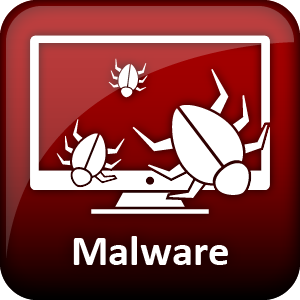
University of Pittsburgh Company Cyber Security Posture
pitt.eduThe University of Pittsburgh is a top-ranked, public institution in Pennsylvania and a member of the Association of American Universities of leading research universities. With our discoveries, we are recognized as one of the most innovative universities in the world. We invent the paths of the future and forge ahead. Pitt is a member of the Association of American Universities (AAU), which comprises 62 preeminent doctorate-granting research institutions in North America.
UP Company Details
university-of-pittsburgh
19029 employees
297515.0
611
Higher Education
pitt.edu
363
UNI_4838342
In-progress
Between 900 and 1000
This score is AI-generated and less favored by cyber insurers, who prefer the TPRM score.
 UP Global Score
UP Global Score.png)

University of Pittsburgh Company Scoring based on AI Models
| Model Name | Date | Description | Current Score Difference | Score |
|---|---|---|---|---|
| AVERAGE-Industry | 03-12-2025 | This score represents the average cybersecurity rating of companies already scanned within the same industry. It provides a benchmark to compare an individual company's security posture against its industry peers. | N/A | Between 900 and 1000 |
University of Pittsburgh Company Cyber Security News & History
| Entity | Type | Severity | Impact | Seen | Url ID | Details | View |
|---|---|---|---|---|---|---|---|
| University of Pittsburgh | Data Leak | 50 | 2 | 10/2019 | UNI3617423 | Link | |
Rankiteo Explanation : Attack limited on finance or reputationDescription: An administrator unintentionally linked a spreadsheet with financial information that was not meant for the recipients in an email sent to students at the University of Pittsburgh Graduate School of Public Health informing them of outstanding amounts. The Excel spreadsheet that was distributed to seven students on September 24 included information about the tuition for 38 students, including the seven receivers. Despite the fact that no Social Security or banking details were provided Students who unintentionally downloaded the attachment were told to delete the email from their user accounts, devices, and email trash. | |||||||
University of Pittsburgh Company Subsidiaries

The University of Pittsburgh is a top-ranked, public institution in Pennsylvania and a member of the Association of American Universities of leading research universities. With our discoveries, we are recognized as one of the most innovative universities in the world. We invent the paths of the future and forge ahead. Pitt is a member of the Association of American Universities (AAU), which comprises 62 preeminent doctorate-granting research institutions in North America.
Access Data Using Our API

Get company history
.png)
UP Cyber Security News
2 grants will advance Pitt life sciences and cyber training opportunities
This digital hub, a first for the Pittsburgh region, aims to make it easier for people of all backgrounds to work towards a career in ...
Pittsburgh Cybersecurity Job Market: Trends and Growth Areas for 2024
Explore Pittsburgh's cybersecurity job market trends and growth for 2024. Learn about in-demand roles, education, and opportunities in ...
Hacking4Humanity 2025 Tech and Policy Hackathon
Join Hacking4Humanity 2025, a hybrid hackathon empowering students to tackle online hate through innovative tech and policy solutions.
Engineering Resilience
Original article published by Idaho National Laboratory. Reposted with permission. Everyday life depends on a robust infrastructure network ...
How we ranked the best master’s in cybersecurity programs for 2025
We analyzed more than 15 different master's in cybersecurity programs and found the best ones.
Top Cybersecurity Employers in Pittsburgh: Who's Hiring and What They Look For
Discover top cybersecurity employers hiring in Pittsburgh, Pennsylvania. Learn what skills they seek and how to prepare for a successful ...
Experts are worried about cyber threats to infrastructure. This Pitt program is raising awareness.
On Nov. 25, however, a terrorist group successfully targeted the Municipal Authority of Aliquippa, raising concerns about further attacks in the ...
Why a diplomat became Pitt Cyber’s new policy director
In the world of policymaking, Jessica Kuntz observes there's often a divide between folks who enjoy writing the policy, and those who think ...
Pittsburgh Cybersecurity Job Market: Trends and Growth Areas for 2025
Explore Pittsburgh's 2025 cybersecurity job market trends and growth areas. Discover opportunities and challenges in Pennsylvania, US.

UP Similar Companies

University of Central Florida
Founded in 1963 to provide talent for Central Florida and the growing U.S. space program, UCF has been making an impact on the state, the nation — and outer space — ever since. With 13 colleges and more than 230 degree programs, your passion lies at one of our campus locations designed to help you

Temple University
As the largest university in one of the nation’s most iconic cities, Temple educates diverse future leaders from across Philadelphia, the country and the world who share a common drive to learn, prepare for their careers and make a real impact. Founded as a night school by Russell Conwell in 1884, T

North Carolina State University
With more than 34,000 students and 7,000 faculty and staff, North Carolina State University is a comprehensive university known for its leadership in education and research, and globally recognized for its science, technology, engineering and mathematics leadership. NC State students, faculty and

Apollo Education Group
Apollo Education Group, Inc. was founded in 1973 in response to a gradual shift in higher education demographics from a student population dominated by youth to one in which approximately half the students are adults and over 80 percent of whom work full-time. Apollo's founder, John Sperling, believ

Voronezh State University
Voronezh State University has a well-established reputation for excellence in teaching and research and is consistently ranked amongst the top Russian Universities by both government and independent surveys. Today the University has 118 departments, with 22,000 students and over 1,000 post-gradua

University of Calgary
The University of Calgary is a leading Canadian university located in the nation's most enterprising city. The university has a clear strategic direction to become one of Canada's top five research universities, where research and innovative teaching go hand in hand, and where we fully engage the co

Frequently Asked Questions
Explore insights on cybersecurity incidents, risk posture, and Rankiteo's assessments.
UP CyberSecurity History Information
How many cyber incidents has UP faced?
Total Incidents: According to Rankiteo, UP has faced 1 incident in the past.
What types of cybersecurity incidents have occurred at UP?
Incident Types: The types of cybersecurity incidents that have occurred incident Data Leak.
How does UP detect and respond to cybersecurity incidents?
Detection and Response: The company detects and responds to cybersecurity incidents through containment measures with Informed students to delete the email from their user accounts, devices, and email trash.
Incident Details
Can you provide details on each incident?

Incident : Data Leak
Title: Unintentional Data Leak at University of Pittsburgh Graduate School of Public Health
Description: An administrator unintentionally linked a spreadsheet with financial information that was not meant for the recipients in an email sent to students at the University of Pittsburgh Graduate School of Public Health informing them of outstanding amounts.
Date Detected: 2023-09-24
Type: Data Leak
Attack Vector: Email
Vulnerability Exploited: Human Error
Threat Actor: Internal (Unintentional)
Motivation: Accidental
What are the most common types of attacks the company has faced?
Common Attack Types: The most common types of attacks the company has faced is Data Leak.
Impact of the Incidents
What was the impact of each incident?

Incident : Data Leak UNI3617423
Data Compromised: Financial Information, Tuition Details
What types of data are most commonly compromised in incidents?
Commonly Compromised Data Types: The types of data most commonly compromised in incidents are Financial Information.
Which entities were affected by each incident?

Incident : Data Leak UNI3617423
Entity Type: Educational Institution
Industry: Education
Location: Pittsburgh, PA
Customers Affected: 38 students
Response to the Incidents
What measures were taken in response to each incident?

Incident : Data Leak UNI3617423
Containment Measures: Informed students to delete the email from their user accounts, devices, and email trash
Data Breach Information
What type of data was compromised in each breach?

Incident : Data Leak UNI3617423
Type of Data Compromised: Financial Information
Number of Records Exposed: 38
Sensitivity of Data: Medium
File Types Exposed: Excel Spreadsheet
How does the company handle incidents involving personally identifiable information (PII)?
Handling of PII Incidents: The company handles incidents involving personally identifiable information (PII) through were Informed students to delete the email from their user accounts, devices and and email trash.
Post-Incident Analysis
What were the root causes and corrective actions taken for each incident?

Incident : Data Leak UNI3617423
Root Causes: Human Error
Additional Questions
General Information
Who was the attacking group in the last incident?
Last Attacking Group: The attacking group in the last incident was an Internal (Unintentional).
Incident Details
What was the most recent incident detected?
Most Recent Incident Detected: The most recent incident detected was on 2023-09-24.
Impact of the Incidents
What was the most significant data compromised in an incident?
Most Significant Data Compromised: The most significant data compromised in an incident were Financial Information and Tuition Details.
Response to the Incidents
What containment measures were taken in the most recent incident?
Containment Measures in Most Recent Incident: The containment measures taken in the most recent incident were Informed students to delete the email from their user accounts, devices and and email trash.
Data Breach Information
What was the most sensitive data compromised in a breach?
Most Sensitive Data Compromised: The most sensitive data compromised in a breach were Financial Information and Tuition Details.
What was the number of records exposed in the most significant breach?
Number of Records Exposed in Most Significant Breach: The number of records exposed in the most significant breach was 38.0.
What Do We Measure?
















Every week, Rankiteo analyzes billions of signals to give organizations a sharper, faster view of emerging risks. With deeper, more actionable intelligence at their fingertips, security teams can outpace threat actors, respond instantly to Zero-Day attacks, and dramatically shrink their risk exposure window.
These are some of the factors we use to calculate the overall score:
Identify exposed access points, detect misconfigured SSL certificates, and uncover vulnerabilities across the network infrastructure.
Gain visibility into the software components used within an organization to detect vulnerabilities, manage risk, and ensure supply chain security.
Monitor and manage all IT assets and their configurations to ensure accurate, real-time visibility across the company's technology environment.
Leverage real-time insights on active threats, malware campaigns, and emerging vulnerabilities to proactively defend against evolving cyberattacks.




